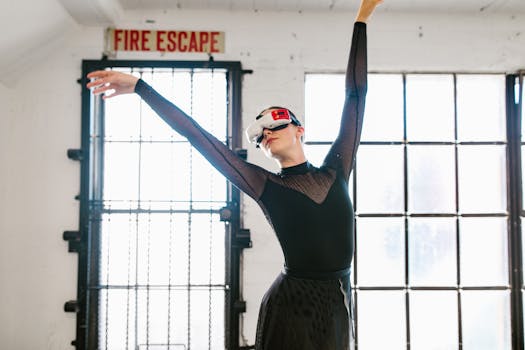Creating dance materials is a vital aspect for anyone involved in dance education, choreography, or performance. Regardless of your experience level, developing effective materials can enhance learning and engagement.
Whether you are a dance teacher, choreographer, or even a student, having the right resources can make a significant difference in the overall experience. This guide will detail how to create dance materials that are informative, engaging, and easy to use.
Throughout this article, we will cover various aspects of creating dance materials, including planning, designing, and distributing them effectively. By following these steps, you can ensure a structured and comprehensive approach to dance education.
Understanding Your Target Audience
The first step in creating effective dance materials is knowing your audience. Understanding who will use these materials helps you tailor content to meet their needs. Consider factors like age, skill level, and learning preferences.
For example, materials for children may incorporate vibrant colors and playful graphics, while content for advanced dancers could include technical jargon and detailed instructions. Adjust your approach accordingly to enhance the learning experience.
Next, think about the goals of your materials. Are they for teaching beginners a new routine, refining advanced skills, or promoting a performance? Identifying these objectives can help channel your creativity positively.
Additionally, it’s important to consider the diversity among dancers. Including various styles, techniques, and cultural backgrounds can enrich the experience and make your materials relatable and inclusive.
Finally, gather feedback through surveys or discussions with your target audience. This process can provide invaluable insights into what learners find intriguing or challenging, allowing you to refine your materials for better engagement.
Researching Dance Styles and Techniques
In the process of creating dance materials, in-depth research on various dance styles and techniques is essential. The more you know, the better equipped you’ll be to communicate effectively with your audience.
Start by exploring the fundamental principles of dance styles you want to cover. Whether it’s ballet, hip-hop, jazz, or contemporary, understanding basic techniques will lay the foundation for your materials.
Additionally, consider the historical context and cultural significance behind each style. This knowledge adds depth to your materials and provides context that dancers can appreciate and learn from.
Moreover, watching performances, tutorials, and instructional videos can provide practical insights. Observe how different instructors convey concepts and techniques, taking notes on their teaching styles and effective methods.
Finally, document your findings in a structured format. Organize your research into tables or bullet points for easy reference when developing your materials, ensuring clarity in your content creation process.
Choosing the Right Format
The format of your dance materials is crucial for effective communication. Different formats serve distinct purposes, whether they are physical handouts, digital resources, or multimedia presentations.
Printed materials like booklets or flyers can be beneficial for workshops or classes. They allow dancers to follow along, take notes, and engage interactively with the content.
On the other hand, digital formats like videos, PDFs, or online courses offer flexibility and accessibility. Dancers can revisit the material whenever needed, facilitating a self-paced learning environment.
Furthermore, incorporating multimedia like images and videos enhances understanding. A visual representation of techniques can make complex movements easier to grasp and replicate.
Ultimately, choose a format that aligns with your audience’s preferences, learning styles, and the environment in which you’re presenting the materials. Transitioning between multiple formats can also cater to different needs.
Designing Eye-Catching Visuals
Visual design plays a pivotal role in creating engaging dance materials. The right visuals attract attention and facilitate better comprehension of the dance concepts being explained.
Start by selecting a color palette that resonates with the dance style. For instance, vibrant colors may be appropriate for contemporary dance, while muted tones could complement ballet materials.
Typography is equally important; readability is key. Choose fonts that are clear and straightforward, avoiding overly decorative types that may distract from the content.
Incorporate images or illustrations that clearly depict dance movements. Diagrams showing body positions or sequences can significantly aid learners in understanding techniques effectively.
Lastly, consider how the arrangement of elements on the page affects flow. Use white space to avoid clutter and direct focus to key information, enhancing overall readability and appeal.
Drafting and Refining Content
Once you have a format and design set, it’s time to draft the content of your dance materials. This is where your research and understanding come into play, shaping an informative and engaging narrative.
Begin by outlining the key points you want to cover in your materials. A structured outline helps maintain clarity and allows for easy navigation. Include sections for introductions, instructions, and summaries.
Use concise and clear language to convey ideas. Avoid jargon unless your audience is familiar with specific terminology. Aim for a friendly tone to enhance relatability while maintaining professionalism.
Include practical examples and exercises for learners to practice. These elements reinforce the concepts taught and provide a tangible way for dancers to apply what they’ve learned.
Finally, don’t hesitate to seek feedback on your drafts. Peer reviews can provide fresh perspectives and help refine the content. Be open to making changes based on constructive criticism to enhance your materials.
Distributing Your Dance Materials
After creating your dance materials, the next step is distribution. Utilizing diverse platforms ensures that your materials reach as many learners as possible, catering to different preferences.
Consider hosting workshops or classes where materials can be introduced directly. Personal interaction fosters engagement, providing an opportunity for immediate feedback and clarification.
Additionally, leverage social media platforms to share digital resources. Facebook, Instagram, and YouTube can serve as powerful tools for reaching a broader audience interested in dance.
For printed materials, local dance studios, schools, and community centers may offer distribution channels. Partnering with these organizations can enhance visibility and create networking opportunities.
Lastly, consider creating an online portal or website where learners can access materials anytime. This approach promotes self-directed learning and ensures resources are readily available.
Conclusion
Creating dance materials is an intricate yet rewarding process that enhances the learning experience for dancers. By understanding your audience, conducting thorough research, and designing engaging resources, you can make a meaningful impact in the world of dance.
Utilizing a variety of formats and distribution methods can further increase accessibility and appeal. In doing so, you prepare your dancers not just to learn but to thrive in their dance journey.
By following the steps outlined in this guide, you can develop high-quality, engaging dance materials that leave a lasting impression on your audience. Start your creative journey today!


